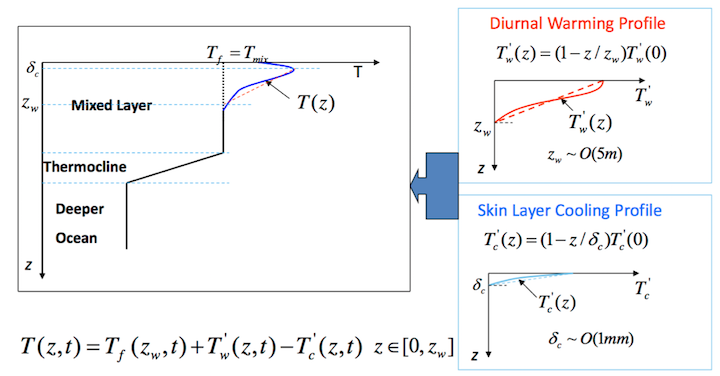Sea Surface Temperature (SST) is required in a Numerical Weather Prediction (NWP) system as the lower thermal boundary condition of air-sea heat fluxes calculation at forecast step and a radiative transfer model (CRTM or RTTOV) at analysis step. SST analysis has been previously produced independently and then provided to NWP system as an input. The GFS NSST scheme was initially developed at NCEP by Xu Li in 2007, and subsequently received contributions by S. Moorthi, Y.-T. Hu and J. Derber, leading to operational implementation in the GFS in 2017 (Li (2015)[118] and Li and Derber (2009) [117]).
At the forecast step, Near-Surface Sea Temperature (NSST) is an oceanic vertical temperature profile just below the sea surface. Here, only the vertical thermal structure due to diurnal thermocline layer warming and thermal skin layer cooling is resolved, both with an origin on Fairall et al. (1996) [61] .

Linear T-Profile:
\[ T(z)=T_{f}(z_{w})+(1-z/z_{w})T_w^{'}(0)-(1-z/\delta_{c})T_c^{'}(0) \]
where:
The GFS NSST scheme is used to forecast the NSST for two main purposes: supply SSTs to the atmospheric model for the calculation of air-sea heat and moisture fluxes and providing a sub-layer temperature profile forecast for use as a first guess in the Gridpoint Statistical Interpolator (GSI) data assimilation code. Atmospheric inputs include short- and long-wave radiation, surface pressure, surface layer winds, temperature and specific humidity, and rainfall. The NSST scheme and has shown positive impact on the analysis and prediction of the ocean and atmosphere in weather prediction time scale.